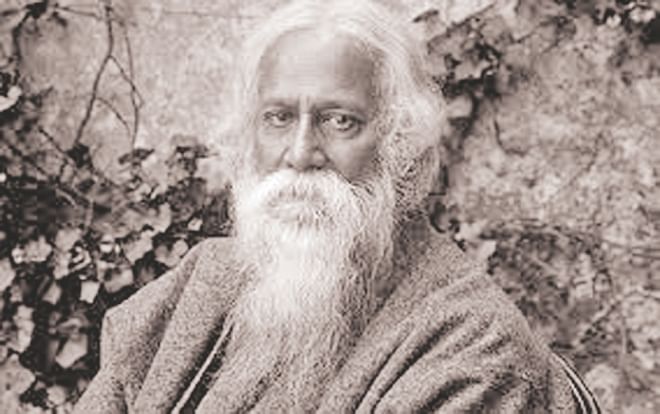When Tagore came to Sylhet
When Tagore came to Sylhet

Sylhet can take pride in itself as being the recipient of many august visits, including those by Hazrat Shahjalal, Ibn Batuta, Sree Chaitannya, Mohammad Ali Jinnah, Kazi Nazrul Islam, Nobel Laureate Rabindranath Tagore and many more personalities from the Mogul and British eras.
Sylhet can also boast of being the only district in Bangladesh or in erstwhile Bengal having its own script with its own letters and dialect which is called “Nagri”. Although the script and the letters are now only a literary curiosity, by and large the dialect is still fighting fit, even colonising like a nouveau riche jargon in some local schools in London, known as the Sylheti diaspora. That could be one of the reasons that the most Syletians are not comfortable conversing in pure Bangla. Dr. Mujtaba Ali's grade in matriculation was not remarkable. But he cherished a desire to study at Shantiniketan which he didn't qualify for. When apprised of the matter, Rabindranath Tagore wanted to take Mujtaba Ali's interview himself. After the interview, when he was asked for his opinion, Tagore replied “ It's all right. But the smell of orange still exudes from his mouth.”
Rabindranath Tagore was holidaying in Shillong. Initially he declined all invitations to visit Sylhet as communication with the region in those days was very primitive. But finally he had to yield when repeated calls from Sylhet Brahmo Samaj, Sylhet Mahila Samity and Anjumane-Islamia kept pouring in. The Nobel Laureate set foot in Sylhet on 5 November 1919. He was accorded a hearty welcome by the notables of Sylhet, among whom were Rai Bahadur Shukhomoi Choudhury, chairman of Sylhet Muncipality, Syed Abdul Majid (Kaptan Mia), who later became the first Muslim minister of Assam, Abdul Karim, Rai Bahadur Promodchandra Dutta, Nalinibala Choudhury and other influential personalities.
The poet was accompanied by his son Rathindranath Tagore and his daughter-in-law Pratima Devi. On the same day he had to attend a reception hosted by Brahmo Samaj where he had to render a song, beena bajao hey momo antorey. After that he recited from the Upanishad. The next day, 6 November 1919, the poet was accorded a civic reception at Loknath Ratan Mani Town Hall (Sharada Hall). The chairman of the reception committee was the public leader Khan Bahadur Syed Abdul Majid CIE. More than 5000 people attended that congregation.
In addition to Bengali, Tagore knew Sanskrit, English, Marathi and Persian. Though acquainted with Urdu, Tagore was not really prepared for it. On the other hand, the chairman of the committee, Syed Abdul Majid, educated at Saint Xavier's and Presidency College in Calcutta and with excellent command of English, was not comfortable in spoken Bangla. Considering the fact that it would not be befitting to deliver his speech either in the Sylheti dialect or in English, Majid delivered his welcome speech in Urdu. His baritone and the vocabulary employed in the speech were so impressive that the poet became not only overwhelmingly happy, but even rose from his chair and hugged Syed Abdul Majid. There was applause all around.
The Nobel Laureate then delivered his 'Bangla Shadhona”.
During his visit to Sylhet, the poet remained busy with many more programmes. On 7 November 1919 he delivered another significant speech at the M.C. College hostel ”Akankha”.
The soul of the poet was so awed by the breath-taking beauty of Sylhet that he instantly composed a poem on the region. He called it SreeBhumi.
Dr. (Capt.Retd) Syed Ahmed Mortada is a literature enthusiast and freelance writer. His e-mail is Samara1985@hotmail.com